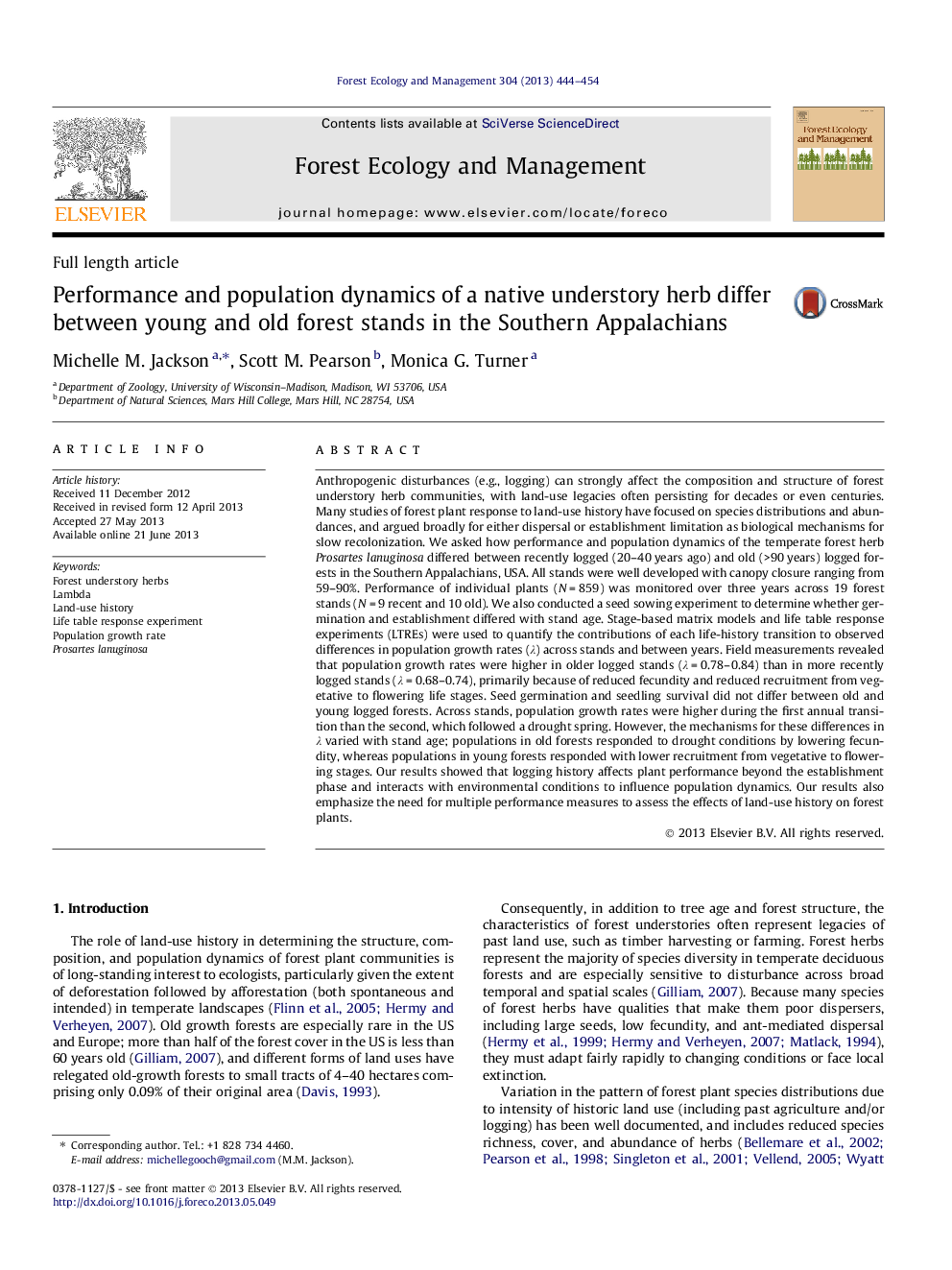| کد مقاله | کد نشریه | سال انتشار | مقاله انگلیسی | نسخه تمام متن |
|---|---|---|---|---|
| 6544347 | 159204 | 2013 | 11 صفحه PDF | دانلود رایگان |
عنوان انگلیسی مقاله ISI
Performance and population dynamics of a native understory herb differ between young and old forest stands in the Southern Appalachians
دانلود مقاله + سفارش ترجمه
دانلود مقاله ISI انگلیسی
رایگان برای ایرانیان
کلمات کلیدی
موضوعات مرتبط
علوم زیستی و بیوفناوری
علوم کشاورزی و بیولوژیک
بوم شناسی، تکامل، رفتار و سامانه شناسی
پیش نمایش صفحه اول مقاله

چکیده انگلیسی
Anthropogenic disturbances (e.g., logging) can strongly affect the composition and structure of forest understory herb communities, with land-use legacies often persisting for decades or even centuries. Many studies of forest plant response to land-use history have focused on species distributions and abundances, and argued broadly for either dispersal or establishment limitation as biological mechanisms for slow recolonization. We asked how performance and population dynamics of the temperate forest herb Prosartes lanuginosa differed between recently logged (20-40 years ago) and old (>90 years) logged forests in the Southern Appalachians, USA. All stands were well developed with canopy closure ranging from 59-90%. Performance of individual plants (N = 859) was monitored over three years across 19 forest stands (N = 9 recent and 10 old). We also conducted a seed sowing experiment to determine whether germination and establishment differed with stand age. Stage-based matrix models and life table response experiments (LTREs) were used to quantify the contributions of each life-history transition to observed differences in population growth rates (λ) across stands and between years. Field measurements revealed that population growth rates were higher in older logged stands (λ = 0.78-0.84) than in more recently logged stands (λ = 0.68-0.74), primarily because of reduced fecundity and reduced recruitment from vegetative to flowering life stages. Seed germination and seedling survival did not differ between old and young logged forests. Across stands, population growth rates were higher during the first annual transition than the second, which followed a drought spring. However, the mechanisms for these differences in λ varied with stand age; populations in old forests responded to drought conditions by lowering fecundity, whereas populations in young forests responded with lower recruitment from vegetative to flowering stages. Our results showed that logging history affects plant performance beyond the establishment phase and interacts with environmental conditions to influence population dynamics. Our results also emphasize the need for multiple performance measures to assess the effects of land-use history on forest plants.
ناشر
Database: Elsevier - ScienceDirect (ساینس دایرکت)
Journal: Forest Ecology and Management - Volume 304, 15 September 2013, Pages 444-454
Journal: Forest Ecology and Management - Volume 304, 15 September 2013, Pages 444-454
نویسندگان
Michelle M. Jackson, Scott M. Pearson, Monica G. Turner,